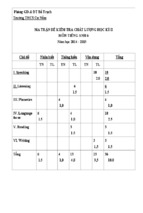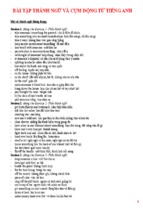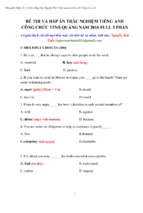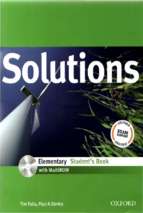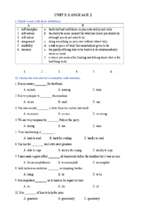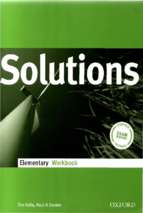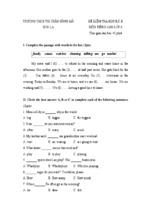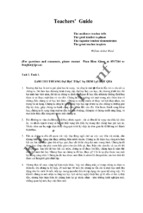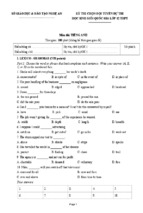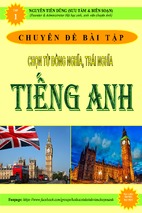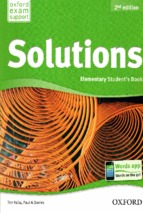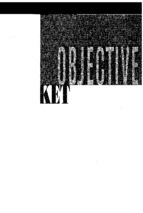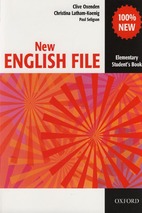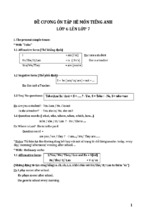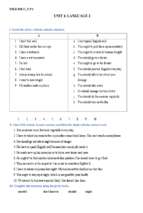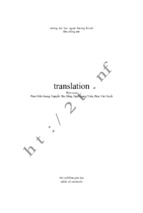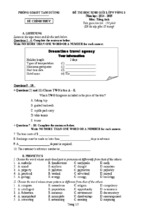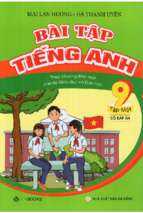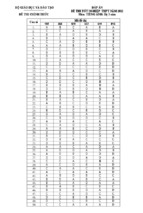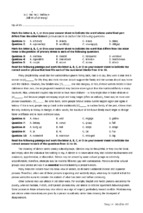tài liệu dùng cho việc ôn tập học sinh giỏi THPT, phần tóm tắt đoạn văn
SUMMARY FOR GIFTED STUDENTS
TASK 1
Summarize in not more than 120 words, describing the life in deserts.
As what geographers have estimated, about twenty percent of the earth's surface is occupied by
deserts. A majority of us view deserts as one unique kind of landscape -- areas with little or no
rainfalls.
In actual fact, there are differences between the deserts, though in varying degrees. While it is
common for laymen like us to see deserts as rocky or covered with gravel or pebbles, there are some
where large sand dunes inhabit. Despite the fact that rainfall is minimal, temperatures do change in
deserts, ranging from seasonal ones to daily changes where extreme hotness and coldness are
experienced in the day and night.
Unfavorable conditions in the deserts, especially the lack of water, have discouraged many living
things from inhabiting these landscapes. Nevertheless, there are exceptionally surviving ones which
through their superb tactics, have managed to live through and are still going strong. One such kind
is the specialist annual plants which overcome seasonal temperature changes with their extremely
short, active life cycles. In events of sudden rain, the plant seeds pullulate and grow very quickly to
make full use of the rain water. Their flowers bloom and set seeds that ripen quickly in the hot sun
too. Once the water runs dry, the mother plant dies, leaving behind the drought-resistant seeds,
waiting patiently for the next rainy season to arrive.
The Cacti, a native in American deserts, adapts to the dry surroundings by having unique body
structures. The plant has swollen stems to help store water that carries it through months. By having
sharp pines instead of leaves, water loss through respiration is minimized. Besides, these pointed
pines also help the plant ward off grazing animals, thus enhancing its survival period.
Besides plants, there are also animals with distinct surviving tactics in deserts too. For instance,
Skinks (desert lizards ) metabolize stored fats in their bulbous tails, producing water to supplement
their needs, just like what camels do with the stored food in their humps during long journeys
through deserts. Antelopes like the addax, have very low water needs and hence are able to tolerate
the conditions in deserts, extracting moisture from the food they eat.
Finally, there are the sandgrouses ( desert birds ) which do not have special features to overcome the
drought-like nature in deserts. Hence, to survive in these hot, dry deserts, they need to spend a large
part of their time flying in search of waterholes.
Answer
Despite the dry conditions in the deserts, some plants and animals still manage to survive there. One
of them is the specialist annual plants. Their short life cycles allow them to germinate, grow and
produce seeds during short rainy seasons. These seeds are drought-resistant and are able to wait for
the next rainy season before starting their life cycles again. The Cacti adapts to the dry weather by
having swollen stems for water storage and pine-like leaves to minimize water loss through
respiration. Skinks generate water from stored fats in their tails and antelopes which requires very
little water, survives in deserts by extracting water from food they eat. Finally, sandgrouse with no
adaptive features turn to waterholes constantly for help. ( 119 words )
1
gravel
Small pieces of rocks and stones
pullulate
to have just enough money to pay for the things that you need
bulbous
like a bulb
TASK 2
Summarize in not more than 120 words, the purpose of snakes' bite, the venom's fatality and
also the remedy for such bites.
All snakes are hunters and predators, feeding on the animals and sometimes their eggs. Having no
limbs, snakes cannot hold their preys down to bite; hence they usually swallow them whole.
Poisonous snakes sometimes do immobilizetheir preys with their venom to make consumption
easier.
Most poisonous snakes are conspicuously colored to warn others off. One example is the redheaded
krait which has a bluish-black body and scarlet head and tail. Snakes like the cobras, which have less
outstanding body colors, display their fatality by lifting the front part of their body and spreading
their hoods.
It is truly a myth that poisonous snakes attack humans for food. Humans can never be their targets
for food as we are normally too large for them to swallow. in cases where snakes do bite, these
attacks are usually defensive ones and the venom injected is normally little or sometimes even none.
The full, fatal dose of the venom is only released on smaller animals which the snakes can swallow
easily. Besides helping in the killing and immobilizing of their preys, the poison also acts as
digestive agents for snakes.
Why then is the venom so deadly ? In general, there are three kinds of poisons in the venom, though
in varying amounts, depending on the type of snake in question. Venoms usually contain substances
that weaken the blood corpuscles and the lining of the blood vessels. Profuse bleeding, often a
common result of snake-bites, is caused by the anticoagulants present in the poison which prevents
blood clotting. The paralysis of the heart and respiratory muscles is performed by the nervous
system attacking toxins.
Though these bites are deadly, certain actions can be taken to slow down the spread of the venom,
hence saving the victim's life. Attempting to incise and suck at the spot of the bite is more likely to
be harmful than a cure. The poisonous venom usually travels fast into the body upon being released;
hence sucking at the mouth of the wound will not help remove the poison, rather, incising the bite
may lead the victim to great pain and further profuse bleeding. Instead, a broad, firm crepe bandage
should be applied over the would and up the full limb to compress the tissues and prevent the spread
of the venom. After which, the victim must be duly sent to the hospital for professional treatment.
Answer
Snakes attack larger animals like us when they are disturbed. These bites are not fatal as little or
none of the venom is released. The full, deadly dose of poison is used to kill smaller animals for
food. Snake venoms contain three types of poisons, usually varying in amounts There are substances
that weaken the blood cells and walls of blood vessels; anticoagulants to prevent blood clotting,
2
which results in profuse bleeding and toxins to paralyze the heart and respiratory muscles. When
bitten by a snake, one should apply a broad bandage over the wound and up the limb to help
compress the tissues and prevent the spread of the venom before sending the victim the hospital.
( 114 words )
TASK 3
Make a summary of not more than 120 words, describing the emergence of paper money used
widely today.
Buying things today is so simple. Just enter a shop, say a book store, choose the desired book and
pay for it. Long ago, before the invention of money, how did people trade?
The most primitive way of exchange should be the barter trade. In this form of transaction, people
used goods to exchange for the things that they had in mind. For instance, if person A wanted a book
and he had a spare goat, he must look for someone who had the exact opposite, that is, that someone,
say person B, must have a spare book of person A's choice and is also in need of a goat. Having
found such a person, the problem does not end here. A big goat may worth not only one book, hence
person B may have to offer person A something else, say five chickens. However, he runs the risk of
person A rejecting the offer as he may not need the chickens. The above example clearly illustrates
the inefficiency of barter trading.
Many years later, the cumbersome barter trade finally gave way to the monetary form of exchange
when the idea of money was invented. In the early days, almost anything could qualify as
money: beads, shells and even fishing hooks. Then in a region near Turkey, gold coins were used as
money. In the beginning, each coin had a different denomination. It was only later, in about 700 BC,
that Gyges, the king of Lydia, standardized the value of each coin and even printed his name on the
coins.
Monetary means of transaction at first beat the traditional barter trade. However, as time went by, the
thought of carrying a ponderous pouch of coins for shopping appeared not only troublesome but
thieves attracting. Hence, the Greek and Roman traders who bought goods from people faraway
cities, invented checks to solve the problem. Not only are paper checks easy to carry around, they
discouraged robbery as these checks can only be used by the person whose name is printed on the
notes. Following this idea, banks later issued notes in exchange for gold deposited with them. These
bank notes can then be used as cash. Finally, governments of today adopted the idea and began to
print paper money, backed by gold for the country's use.
Today, besides enjoying the convenience of using paper notes as the mode of exchange, technology
has led man to invent other means of transaction too like the credit and cash cards.
Answer
Long ago, people bought things through barter trade. However, the difficulty of having to look for
the right partner and dividing the goods led people to switch over to monetary transaction. at first,
beads, shells and fishing hooks were used as money. Near Turkey, gold coins with irregular
denominations were used for trade. Later, King Gyges standardized the individual coin value. People
soon found carrying coins around for shopping troublesome and thieves courting. Hence, merchants
started to issue checks with names of the users on them to discourage robbery. Following that, banks
3
started to issue cash notes in return for gold deposited with them. Finally, adopting the idea, today,
governments printed paper money backed by gold for the country's usage. ( 119 words )
4
TASK 4
Make a brief account of not more than 120 words, describing the usefulness and/or
harmfulness of the various kinds of fungi mentioned in the passage.
Whenever we see stale bread or fruits turning mouldy, fungi are at work. When trees die and their
dead trunks start to decompose, fungi are the masterminds. Most of us tend to associate fungi with
the decomposition of dead plants or animals. In actual fact, fungi can also attack living things.
The fungi that cause decay are known as the Saprobe. They are actually yeasts which feed on the
dead remains of plants and animals. While they can be anuisance in the kitchen, as they turn our
food bad, Saprobe can also assist man. For instance, by breaking down the dead bodies of plants and
animals, these leftovers are removed from the living world. In addition, yeasts can be used to make
wine, beer and also as raising agents in bread.
The parasitic fungi are the ones which feed on living things. The powdery mildew, downy mildew or
rust are the few which attack plants. Usually, these fungi deposit themselves on the leaves or flowers
of the plants. Their hyphaes (slender, feeding branches) then squeeze themselves into the gaps
between the plant's cells and soak up their nutrients. After which, a hard, black fruiting body called
the ergot is left in the flower replacing the seeds. The ergot contains toxins which causes serious
illnesses if eaten. Despite its poisonous nature, the ergot contains active ingredients which when
purified and used in small amounts, are treatments for migraine. Parasites attacking living animals,
especially man, are rarer as most animals have their own immune system. In special cases like an
AIDS patient, where his immune system is very weak, parasites may find their chance to attack.
The most aggressive kind of fungi is the predatory ones. As the name suggests, they catch and feed
on their preys, usually smaller than themselves. Some predatory fungi dwell in ponds to catch
amoebae or rotifers. In capturing the amoebae, the fungi use their sticky hyphaes to hold down the
creatures before feasting on them. To capture rotifers, the fungi usually hide among the algae,
stretching out their sticky hyphaes again. An unaware rotifer which mistakes one of the hyphaes as
the blob of the algae will grab it, only to find itself trapped and absorbed by the fungi. Some
predatory fungi which live in the soil, set traps to capture victims like the nematodes.
Thus we see that fungi are not only the ones which turn our food mouldy. Besides these, there are
also other kinds. In addition we also understand that fungi, like most other living things, have their
usefulness and harmfulness too.
Answer
Saprobe, also called yeasts, are fungi which turn our food bad. They also help to decompose dead
remains of plants and animals and also acts as ingredients for wine, beer and bread. Parasitic fungi
attack and suck the nutrients of plants, depositing an ergot in place of the seeds in the flowers after
that. The ergot can cause illness when eaten raw but when purified and taken in moderate amounts,
help cure migraine. Parasitic fungi seldom attack animals because of their defensive immune system.
The predatory fungi which sometimes live in waters or on algae in ponds or even in the soil, set
traps to capture their victims, usually smaller than themselves, before feasting on them. ( 116
words )
5
TASK 5
Summarize in your own words, the advantages and disadvantages of owning a television. Your
account should not be more than 120 words.
With the invention of televisions, many forms of entertainments have been replaced. Lively
programs like television serials and world news, have removed from us the need to read books or
papers, to listen to radios or even to watch movies. In fact, during the 1970s, when televisions were
first introduced, cinema theatres suffered great losses as many people chose to stay in the comforts
of their homes to watch their favorite programs.
Indeed, the television brings the world into our house. Hence, by staying at home and pressing some
buttons world happenings are immediately presented before us. Children nowadays develop faster in
language, owing to the early exposure to television programs. At such tender age, it would be
difficult for them to read books or papers. Thus, television programs are a good source of learning
for them. Furthermore, pronunciations by the newscasters, actors or actresses are usually
standardized, hence young children watching these programs will learn the 'right' pronunciations too.
Owning a television is also extremely beneficial to working parents who are usually too busy or
tired to take their kids out for entertainments. Surrounded by the comforts of their home, the family
can have a chance to get together and watch their favorite television programs.
Of course, we should not be too carried away by the advantages of the television and overlook its
negative points. Watching television programs takes away our need to read. Why bother to read the
papers when we can hear them from the television news reports? Why read books when exciting
movies are screened? The lack of reading is unhealthy especially to younger children as they will
grow up only with the ability to speak but not write. I have a neighbor whose six-year-old child can
say complete sentences like "I like cats," but when told to write out the sentence, is unable to do so.
Not only are the writing skills of children affected, their thinking capacities are also handicapped.
Television programs remove the need to think. The stories, ideas and facts are woven in the way
television planners wanted. Exposure to such opinions and the lack of thinking opportunities will
hinder the children's analyzing ability.
Despite the disadvantages of watching television programs, personally, I think that choosing the
'middle path', which is to do selective television viewing and not over indulging in the habit should
be the best solution to reconcile both the merits and demerits of owning a television.
Answer
The television keeps us informed of the world affairs. Early exposure to television programs helps to
develop language skills of young children. These children can also learn to pronounce words
accurately because of the standardized pronunciation in the programs. In a family where both the
parents are working, the television provides the family an opportunity to get together at leisure
times. One disadvantages of watching television programs is that we do less reading and hence our
writing skills are affected. Younger children may learn to speak but not write from television
programs. Furthermore, television programs often spare viewers, especially the young ones, from
pondering upon opinion s presented before the, which will in turn handicap their ability analyze
facts.. ( 119 words )
6
TASK 6
Make a summary of not more than 120 words, describing the various means of
transportation.
The means of transportation has changed and improved over many centuries. Long ago, during the
times of the kings and knights, animals such as horses, buffaloes and camels were used by man for
transportation purposes. These animals no doubt did save man from traveling by foot, they took a
long time to complete the journeys, especially when transporting goods.
In 1825, George Stephenson's opening of the first railway marked a significant progress in the
history of transportation. Railways were in popular demand because they could carry more people
and loads. More importantly, they ran faster than animals. Railways improved the communication
networks and hence, imports and exports of goods and people traveling out of their towns or even
countries to work were made possible. Unfortunately, since the invention of motor vehicles, the
popularity of railways has declined.
Motor vehicles were first invented in the eighteenth century. These vehicles were preferred by
many people as they do not run on tracks and hence do not have fixed routes. Travelers can then
plan their own routes to suit their convenience. This is especially so when the destinations are
places like small towns or remote areas. In these places, few or even none of the trains ever reach
them; so traveling by the motor vehicle would solve this problem. Over many years of
modifications, the motor vehicle is now one of the most commonly used means of transportation.
Today, we travel in cars, taxis, buses, lorries or vans almost every day.
Another form of transportation is by water. It may be the slowest but definitely the cheapest form
of bulk transportation. Though over the centuries of innovations, water transportation has improved
from the ancient wind dependent yachts to the modern motor driven ships, journeys by water are
still characterized by the dangers and unpredictability of meeting natural disasters like the storms.
The evolution of world transportation has reached its pinnacle with the invention of airplanes.
Transportation by planes is the easiest and fastest. Planes gliding smoothly in the air, are not
obstructed by seas, hills, buildings and so on. Though convenient, this means of transport is the
most expensive. Despite the popular demand, the transportation network of the planes is still not a
balanced and complete one till today. Developed countries tend to make use of air transportation
more frequently than the less developed ones as they do more exporting and importing of goods
and also have more people traveling to and fro their countries. Hence, the networks in these
developed countries are denser.
Answer
In ancient times, man made use of animals like the horses to transport themselves and goods. The
journeys usually took a long time. Trains were preferred to animals since its invention, as they carry
more people and goods and travel faster. Motor vehicles proved more superior to trains as they do
not run on rails. Hence, they are able to reach small towns and remote areas where tracks are not
available. Traveling via waters man be slow but it is the cheapest form of bulk transportation.
However, journeys by water are often characterized by the danger of meeting a storm. Traveling by
plane is the most convenient but expensive way and thus we do not use it for daily purposes. ( 120
words )
7
8
TASK 7
Describe briefly the evolution of the writing system and tools. Your summary should not
exceed 120 words.
Today, with just twenty-six letters, we can write a letter to our friends or answer an examination
question. Thousands of years ago, there was no writing system at all. News, knowledge and
information were passed on from one person to another by word of mouth. If you ever played 'rumor
clinic' where a cognate message is passed from one person to another down the chain by mouth, you
will understand the inefficiency of the system. Messages passed down are unreliable as the speakers
may mix up or lose part of the information.
The first written language was invented by the early cave man. They tied bits of animal hair together
to form brushes and painted pictures on the cave wall, telling their friends about their hunts. It was
after several centuries that different writing systems like the Chinese characters and hieroglyphs in
Egypt were invented. The alphabetical system that we are using currently also came about only after
many decades of development.
Besides alphabets, the invention of writing tools is another major transition. In olden times, the kind
of writing tools used, depended on the material they wrote on. For example, in the Middle East,
where clay is abundant in supply, the early people used hollow reed 'pens' to carve onto the wet clay
tablets. After which, these clay pieces were baked till rock hard to make the writings permanent. In
ancient Egypt, Egyptians either wrote on scraped thin pieces of animal skins called 'parchment' or
flattened papaya stems known as 'papyrus'. Their writing tool was a primitive kind of fountain pen -a reed with ink inside.
It was only in the 1880s, that fountain pens were invented. Before that, most people used
either quill pens - sharpened bird feathers or nibbed pens, which were dipped into ink before
writing. Fountain pens invented later have both plus and minus points. With tiny ink tanks in them,
fountain pens are superior to quill or nibbed ones as the ink in them do not run out as quickly. The
disadvantage is that sometimes, the nibs of the fountain pens may break, causing the ink to leak,
staining the writer's fingers.
The flaw in fountain pens has led to further investigation and the successful invention of the first
'ballpoint' pen by a Hungarian, Ladislao Biro. There were many people after him who tried to
improve upon the appearance of his ballpoint pens. Today, 'ballpoint' pens are conveniently and
widely used in the world.
Answer
Cave man invented the first written language by drawing pictures on cave walls to tell their friends
about their hunts. It then took several centuries for the Chinese characters, Egyptian hieroglyphs and
the alphabetical system we use today to develop. The writing tools used in ancient times
complimented with the material people wrote on. In the Middle East, hollow reeds were used to
write on wet clay while in Egypt, reeds containing ink were used to write on animal skins or papaya
stems. Quill or nibbed pens which require constant ink dipping were used before the invention of
fountain pens. Discovering that the nibs of fountain pens break easily causing ink leakage, 'ballpoint'
pens were invented to replace them. ( 114 words )
9
TASK 8
Make a summary, describing the ways to solve the problems of putting young children to bed.
Your account should not more than 120 words.
Conflicts between parents and their children at bedtime are common.. For adults, sleep is welcome
rest. For children, it's lost time, time when they could be doing something fun like playing computer
games or finishing a drawing of their cartoon hero. So the youngsters often resist it.
And in families where both parents work, the nightly ritual of putting the children to bed can be
even more of a tussle. Most parents don't get home until at least seven in the evening, and there's
little slack between bath, dinner, homework and bedtime.
Whatever the situation, a growing child still requires a decent amount of sleep, and for young
schoolchildren and toddlers, that's between 10 and 12 hours a night.
But what happens when children fight it every step of the way, from taking a bath to putting on
pyjamas to getting into bed? When they refuse to sleep alone in bed or wake up repeatedly, or need
to be rocked for an hour before nodding off?
It's usually not hard to tell when a child doesn't get enough sleep.
"He can be irritable, whiny, more clumsy," says paediatrician Dr Leigh Shapleigh. "And when a
child has any sort of behavior problem, it is just exacerbated by lack of sleep."
Children - especially small children - thrive on routine, so the more regular their bedtime is the
better it is for the entire family.
Exactly when a child goes to bed has to be, determined by the parents, Shapleigh says.
"The trick is to decide what you want to do. If you want the bedtime at 7.30 or 8.30 or 9.30, decide
how to get there."
Although many parents are consistent, the routine they adopt only results in long, wearying nights.
They become caught in a trap they have inadvertently created. Their children rely on them to help
get to sleep. Parents cajole, sing to them, rock them, rub their back -- only to have the little ones
wake the moment they tiptoe out of the room. Quality time disappears, tempers are short, and
bedtime becomes a civil war.
To frazzled parents who want desperately to escape that trap, Shapleigh suggests the method that
worked for a number of families.
"You have to let them cry. Be there to reassure them. Leave a night light on, but be consistent. They
understand your behavior more than they do your words."
Dr Richard Ferber, a paediatrician who is sometimes called the Dr Spock of children's sleep
problems, assures parents that most bedtime conflicts are not serious, and they can be avoided.
Parents who choose to wait out their child's erratic sleep patterns will probably see them disappear,
but that could take months or years.
10
Instead of waiting, Ferber suggests that parents take action, and after following a pleasant bedtime
routine, put the children to bed, leaving them there even if they cry, but checking on them at specific
intervals.
"There is no way to treat this problem without listening to some crying, but you can keep it to a
minimum," he says.
Parents who are fighting the sleep battle with their children often complain of being tired, but forget
that their children, who haven't yet learned to complain, are also tired.
"It is in your child's best interests to have uninterrupted sleep," Ferber says.
For children as well as adults, Ferber says, "sleep (serves) some restorative function for our bodies
and perhaps for our minds, and it is certainly necessary for normal functioning during the day."
Answer
Firstly, set a fixed time for the child to sleep and keep to it. Try not to persuade, sing or rock him to
sleep as these actions will become habitual and eventually, the child will rely on them to get to sleep.
Instead, leave him alone to fall asleep. Do not worry if he cries but be sure to return to check on him
regularly. You may also try to leave the lights on for a night to reassure the child. Most importantly,
you have to be consistent. Children understand your behavior better than your words. Of course, you
may choose to wait for them to outgrow their irregular sleep patterns which will take a long time.
( 117 words )
TASK 9
Summarize the following article about Vitamin A in not more than 120 words.
Vitamin A is found only in yellow animal fats, in egg-yolk, milk and cheese. It is particularly
plentiful in fish-liver oils, hence fish-liver oils are used for preventing and curing illness caused by
lack of vitamin A. In a well-fed, healthy human being, the liver can store up sufficient vitamin A to
meet the body's requirements for six months.
Although vitamin A itself is not present in plants, many plants produce a substance called carotene,
formed from leaf-green which our bodies can convert into vitamin A. Carotene is the yellowish-red
coloring matter in carrots. The greener a leaf is, the more carotene it usually contains. Hence the
importance of green, leafy vegetables in the diet as a source of carotene. Tomatoes, papayas,
mangoes and bananas contain more carotene than most other fruits. Red palm oil contains so much
carotene that it is used instead of cod-liver oil. Thus, it is very valuable, both as a food-fat and for
deep-frying.
Vitamin A and carotene are insoluble in water and they are not destroyed by heat unless oxygen is
present. Boiling in water, therefore, does not destroy much vitamin A or carotene.
Vitamin A encourages healthy growth and physical fitness. Young animals soon stop growing and
die if vitamin A is not present in their diet. This vitamin keeps the moist surfaces lining the digestive
canal, the lungs and air passages healthy. It also helps keep the ducts of the various glands, the tissue
that lines the eyelids and covers the front of the eyeball functional. As vitamin A helps these tissues
build up resistance to infection, it is often called the anti-infective vitamin.
Some of the most common disorders in people are caused by a shortage of vitamin A, when the
11
moist tissues become dry and rough. This often causes serious eye disease, followed by infection of
the air-passages. The skin may also become flaky and rough. Another defect caused by shortage of
vitamin A is 'night-blindness', when the affected person has distinct vision only in bright light.
As the body cannot produce vitamin A, it has to come from external sources. Thus a well-balanced
diet is required and is usually sufficient to provide the necessary amount. There is therefore no need
to supplement the need in the form of pills.
Answer
Vitamin A is found only in certain food substances. It is also abundant in fish-liver oils. Our liver is
able to store some vitamin A to meet our requirements. Carotene, is a substance which our bodies
can convert into vitamin A. It is found in green leafy vegetables, carrots and some fruits. Vitamin A
is not easily destroyed by heat. It is essential for healthy growth and physical fitness. It also helps
keep the eyes from infection. A lack of vitamin A could lead to eye diseases and skin disorders.
Thus, a well-balanced diet is needed to ensure that the body receives the necessary supply of vitamin
!. It is not necessary to take extra supplements. ( 116 words )
TASK 10
Summarize the following article about bacteria in not more than 120 words.
Bacteria are the smallest living things with a cellular structure; each individual bacterium consisting
of one single colorless cell, which is usually either spherical or rod-shaped. Individual bacteria
measure from 0.0001 inches to 0.00001 inches in length, so they can be seen only with the help of a
high-power microscope. They are so small that they can float in the atmosphere, usually as
'passengers' on dust particles, up to a height of several thousand feet, except immediately after a
heavy downpour, when the air is washed clean.
Bacteria are present in all natural as well as in drinking water that has not been purified or bailed. A
large number of bacteria live in the soil, down to a depth of several feet, and they are
particularly abundant in faeces and sewage. Thus, living bacteria are always present on the surface
of our bodies and on everything around us, but they are seldom found inside the tissues of healthy
plants and animals.
Since most kinds of bacteria contain no chlorophyll, they cannot use light energy and Synthesize
their food. They have to get their food in other ways, mostly ready-made by other living things. Like
plants, it can only take in dissolved food. A majority get their supply from dead remains of other
organisms.
Bacteria reproduce by dividing into two, and these new individuals grow so quickly that they are
ready to divide again in about half an hour. Hence, in ten hours, under the most favorable conditions,
a single bacterium can produce over a million bacteria. That is one reason for it being so difficult to
ensure any object is completely free from any kind of living organisms. In addition, some forms of
bacteria have a waxy envelope outside their cell wall and are thus more difficult to kill.
Few bacteria can long survive a temperature above 80°C in the presence of moisture. Hence, when
food items are boiled, nearly all the bacteria present is killed. Pasteurization is a milder heat
treatment that destroys the bacteria in milk.
The rate of multiplication of bacteria is greatly slowed down at temperatures below 10°C. This
means that food will remain unaffected by bacteria in a refrigerator.
12
Drying is also another method of preserving food and this dehydration of foodstuff prevents bacteria
from growing and multiplying as there is insufficientmoisture.
Answer
Bacteria are tiny colorless cell that cannot be seen with the naked eye. They are found everywhere in
the atmosphere, in our water as well as in the soil. However, they are seldom found inside the tissues
of plants and animals. They are unable to produce their own food and so they rely on other living
things. Their reproduction process is through division of cells and this hap- pens very quickly,
making it difficult to kill them. However, most bacteria are unable to survive a high temperature in
water. The reproduction process is also slowed down when it is extremely cold. Dehydration of
foodstuffs will also stop the multiplication process as there is insufficient moisture for the bacteria to
grow. ( 119 words )
TASK 11
Summarize the lessons one can learn from a dog in not more than 120 words.
There are so many lessons one can learn about life from a dog. Imagine this scenario: it is raining
heavily outside and you need to leave for someone's house. The dog is up and eager, to go with you.
You tell it to stay home. As you leave, you see it squeezing out through the gap in the doorway. You
scold it and order it back home. Then at every turn you make, you suddenly see it following
you sheepishly at a distance. It follows at the risk of being reprimanded for the sore reason of being
somewhere nearby. How else can we experience so selfless an instance of love and faithfulness? We
can learn a lifelong lesson from this sincere warm display of perpetual companionship.
Observe the eating habits of your dog. It does not eat, except when hungry. It does not drink, unless
it is thirsty. It does not gorge itself. It stops eating when it has had enough.
A dog also sets a perfect example of adaptability. If it is moved to a strange place, it is able to adapt
itself to that place and to its thousand peculiarities without a murmur of complaint. It is able to learn
and adapt to a new family's ways and customs. It is quick and ready to please. Man,
being accustomed tocomfort and wealth will be lost if suddenly stripped of all he is accustomed to.
A dog also teaches us a thing or two about, unselfish love. When a dog knows death is approaching,
it tries, with its last vestige of strength, to crawl away elsewhere to die, in order to burden its owners
no more.
A dog does things with all vigor. However, when there is nothing to do, it lies down and rests. It
does not waste its strength and energy needlessly. Many working people are burning the candles at
both ends. Many suffer nervous breakdowns due to stress. Perhaps, they should learn to rest like a
dog does.
A dog above all is truly man's best friend.
Answer
Dogs can teach us many lessons of life. It can teach us through its acts of love and faithfulness,
endangering itself just to accompany you. We can also learn from its eating habits. It will never
over-indulge and knows which food to avoid. Dogs are also able to adapt to its surroundings quickly
13
without complaining as compared to man who complains at the slightest change. Dogs are also
unselfish, choosing not to burden his loved ones but to go away and die. Dogs also know when to
work and when to play. They do not waste their efforts unnecessarily like some of us do at work.
Thus, dogs can set us great examples through their day-to-day living. ( 120 words )
TASK 12
Summarize the following article about Thais and their cuisine in not more than 120 words.
Thais give a great deal of thought and time to the planning and preparation of their meals. There is
an infinite variety of recipes from which they can choose, and rarely would a household repeat the
same dish within a fortnight.
The staple food is rice which is the base for most meals. The most commonly-used meats are pork
and chicken, with a little beef. Fresh fish and other seafood are plentiful and very popular. Fish can
be eaten fresh, salted, dried, fermentedand in many other ways. Vegetables too come in profuse
variety and are unbelievably cheap. Green leafy vegetables, shoots, roots and young leaves are
popular in salads and soups. Even pumpkins and watermelons are used in soups.
Normally, breakfast in a Thai household would probably consist of a lightly boiled egg or rice soup,
followed by 'ba ton ko' which are crisp, hollow, fried roots, often dipped in condensed milk. Lunch
is likely to feature one of many different sorts of noodles available; and perhaps, dumplings made
from flour and sago with a savory filling. The main meal of the day is usually taken early in the
evening, with rice as the base for the accompanying dishes such as curried meat, fish, vegetables and
noodles. Other savory concoctions generally called 'kap khoa' are prepared with great care and add
to the main course. Sweet meats and dishes and fresh fruits, complete the meal. A glass of water is
the usual drink taken with the meal.
In Thailand, people virtually eat all day long as it is very convenient to buy snacks. Food vendors
station themselves outside offices during the day and outside cinemas at night. Other vendors ride
bicycles or motorcycles peddling their wares. When traveling by train, the most outstanding feature
of the journey is the rush of food vendors every time the train stops at a station. They offer drinks,
sweets and even hot dishes like rice and chicken. However, these vendors are slowly disappearing as
commuters are more careful about the food they eat.
Thais do not customarily mix everything into one plate, but take one serving at a time, to be eaten
before proceeding to the next. Meals are eaten with a fork and spoon. Noodles are often taken in
Chinese fashion with chopsticks.
Answer
Thais have such a great variety of food to choose from that a typical household rarely cook the same
dishes in a fortnight. A variety of meat, fish and vegetables are used in different ways with rice as
the basis for most meals. A typical household would serve a simple breakfast of egg or porridge,
followed by noodles and dumplings for lunch. Dinner is more elaborate where rice is usually served,
accompanied by various other dishes. However, Thais seem to eat all day long as there are plenty of
food vendors that line the street everywhere one goes. When one travels on a train, one can see many
of these vendors selling their wares when the train stops. ( 117 words )
TASK 13
Summarize this article about Man and his destruction of wildlife habitatin not more than 120
words
Man is forever changing the face of nature. He has been doing so since he first appeared on the
14
earth. Yet, all that man has done is not always to the ultimate advantage of the earth or himself. Man
has, in fact, destroyed more than necessary.
In his struggle to live and extract the most out of life, man has destroyed many species of wildlife;
directly by sheer physical destruction, and indirectly by the destruction or alteration of habitats.
Some species may be able to withstand disruptions to their habitat while others may not be able to
cope.
Take the simple act of farming. When a farmer tills a rough ground, he makes it unsuitable for the
survival of certain species. Every change in land use brings about a change in the types of plant and
animals found on that land.
When man builds a new town, this means the total destruction of vast areas of farmland or
woodland. Here, you have the complete destruction of entire habitats and it is inevitable.
It follows therefore, that every form of human activity unavoidably upsets or changes the wildlife
complex of the area. Man has destroyed many forms of wildlife for no reasonable purpose. They
have also made many great blunders in land use, habitat destruction and the extermination of many
forms of wildlife.
Man's attitude towards animals depends on the degree to which his own survival is affected. He sets
aside protection for animals that he hunts for sport and wages a war on any other creature that may
pose a danger or inconvenience to him. This creates many problems and man has made irreversible,
serious errors in his destruction of predators. He has destroyed animals and birds which are useful to
farmers as pest controllers. The tragedy that emerges is that all the killing of predators did not in any
way increase the number of game birds.
Broadly speaking, man wages war against the creatures which he considers harmful, even when his
warfare makes little or no difference to the numbers of those he encourages. There is a delicate
predator and prey equilibriuminvolving also the vegetation of any area, which man can upset by
thoughtless intervention.
Therefore, there is a need for the implementation of checks and balances. The continued existence
of these animals depends entirely on man and his attitude towards his own future.
Answer
Man, in his pursuit of development has done more harm than good. By destroying the habitat of
wildlife directly or indirectly, many species of wildlife are lost forever. Certain species are able to
withstand the changes to the land while others simply vanish. Every form of human activity will
affect the habitat of the wildlife. The only preservation done by man is for animals that they consider
useful to man. Their predators are systematically destroyed. Yet this has in no way increased the
number of the protected animals. By intervening, Man has created an imbalance in the cycle.
Therefore, there is a need to keep a balance between development and preservation because man's
future depends very much on this equilibrium. ( 120 words )
TASK 14
Summarize this article about the use of fertilizers in not more than 120 words.
In the early days of farming, people did not understand how plants obtained essential nutrients. It so
happened that wood ash, fish remains and slaughterhouse waste were thrown on vacant land just to
15
get rid of them. Then, people started to notice that the grass, bushes and shrubs on this vacant land
began to grow very well. They reasoned that if their farmland were similarly treated, the growth of
their crops would also improve. People gradually began to realize that the nutrients required by
plants came from the soil and that the amount of nutrients could be increased by the application of
such organic remains to the soil. Thus started the manuring process in farming.
The practice of manuring has been practized as early since the seventeenth century. However, the
importance of manuring was not properly understood until scientists began to study the nutritional
needs of plants and gave birth to fertilizers. Thus, gradually, the use of fertilizers became accepted
by farmers.
There are many types of manure and fertilizer currently being used. Manure is a substance derived
from animals and plants. The most important advantage of using manure is the fact that they not
only supply a wide range of plant nutrients, but also improve the structure of the soil. It cements
together the soil particles to form soil crumbs. The crumb structure is a desirable condition of
cultivated soil. The addition of manure to soil will increase the inorganic and humus content which
helps to prevent soil erosion and loss of plant nutrients when it rains. The common manure used in
farming consists of farmyard manure, compost, blood meal, bone meal and fish meal.
Unlike manure, fertilizers are inorganic substances which do not improve the structure of the soil.
They only supply extra amounts of nutrients to the growing plants when applied to the soil. The
commercial fertilizers commonly used today can be classified into three major categories; namely,
nitrogen (N), phosphate and potash fertilizers.
Besides knowing the type of fertilizer to use, a farmer also needs to know when to apply the
fertilizer and how to apply it. The fertilizer should be applied at the time when the plants need a
particular nutrient most. The time and method of application will determine how profitably the
fertilizers have been used in farming. Fertilizers which have not been properly applied cannot be
absorbed in large quantities by plant roots. These fertilizers may be washed away by rain or they
may kill the plants. This would mean a definite financial loss for the farmer.
Answer
The use of fertilizers began quite by accident when unwanted substances were thrown onto land.
This has resulted in the knowledge that plants get their nutrients from the soil and these could be
increased by the manuring process. Thus, the use of fertilizers began to be accepted by farmers.
There are organic and inorganic fertilizers. Organic fertilizers improve the status of the soil and
helps to prevent soil erosion and loss of nutrients. Inorganic fertilizers supply the extra nutrients
needed by the plants. Farmers also need to know when to apply the fertilizers. Otherwise, they will
lose plenty of money when inappropriately applied as the plants may die or the fertilizers get washed
away by rain. ( 117 words )
TASK 15
Summarize the following article about the reasons for child abuse in not more than 120 words.
The childhood years are supposed to be the best times of one's life; playing and having fun. Yet there
are many children who are deprived of this childhood. They are tortured and verbally and physically
abused.
There is no reason or excuse for child abuse. Abusers claim they do it because of the stress of work.
16
Child-abusing housewives way they feel harassed by a crying child and are unable to curb their own
fury, especially if no support is received from anyone. This is not surprising since support is
extended to a victim of child abuse more readily than to the perpetrator. Occasionally, parents
may vent their frustrations on their child if they fight and quarrel with each other. In cases like there,
it is the children who are the victims.
In this modern age where both parents are usually holding jobs, children are left with babysitters and
nurseries. Abuse by these carers may occur when there are too many children to be minded. The
disappearance of the extended family system is partly to be blamed for these incidents.
Crowded homes and financial problems can also lead to child abuse. When there are too many
mouths to feed, parents feel the pressure and vent their anger on a child.
Substance abuse is another factor which increases the incidents of child abuse. Under the influence
of alcohol or drugs, a parent many not know what he or she may be doing. Or, rather, knows what he
or she is doing but is not bothered at all. A drug addict many experience mood swings and is easily
provoked by a crying baby. Thus we see and read horrifying reports of a child being savagely
tortured and dumped elsewhere, like garbage.
Psychologists believe that child abusers may have been victims of abuse themselves. Thus, in anger
and hatred, they repeat the vicious cycle of abuse. Some have no love for the children they abuse.
Some have been brought up to believe that children should be beaten in order to maintain control.
These are troubled people who need help.
A home is supposed to be a haven where a child ought to feel safe and secure. Unfortunately, more
often than not, the home is also where a child is abused. Whatever the reasons for the abuse,
something must be done to stop the cruelty and help these parents who simply cannot cope
with parenting. Parents-to-be should be counseled and inculcated with parenting skills. The Child
Protection Act which was passed in Parliament in 1991 does not effectively prevent child abuse.
Stricter enforcement is necessary. Thus. it requires a commitment from each individual to help
families with victims. and troubled parents, the perpetrators.
Answer
Child abuse can occur when parents are unable to cope with stress from work and family
commitments. It may also occur when children are left with child-minders who may be too busy
with other kids. Parents who have financial problems may take it out on the children. Substance
abuse may also result in child abuse where the addicts many not know what they are doing till it is
too late. Another reason could be due to these child abusers being victims of child abuse themselves.
They treat their children the way they were treated and it becomes a vicious cycle. Positive steps
should be taken to support and help parents or guardians to cope with parenting. ( 116 words )
TASK 16
Summarize the following article in not more than 100 words.
One of the greatest men ever to have lived in the world was Dr Alexander Flemming. He was a
dedicated English doctor who was very keen to do his best to cure his patients. However, there were
no bacteria-fighting drugs at that time and many of his patients died of blood-poisoning. Therefore,
Dr Flemming tried to discover a bacteria-fighting drug through experiments in his laboratory.
17
He cultivated harmful germs on dishes of jelly. Surprisingly, he discovered that the harmful germs
were killed by the mould in the jelly. The organisms in the mould produced chemical substances
which killed the harmful germs. This was a fantastic discovery in 1928 - a mould that could kill
harmful germs! As a result, Dr Flemming wanted to find the chemical substance made by the mould.
Finally, he found the substance which was three times more effective than carbolic acid, the
disinfectant for killing germs then. The new drug became known as penicillin, after the name of the
mould. Dr Flemming's next challenge was to produce a large amount of this antibody for use on his
patients.
He continued with his experiments. With the outbreak of the Second World War, his drug was very
much in demand. Subsequently, his wonder drug was produced in great amounts. The persons
responsible were Professor Sir Howard Florey who introduced its use for healing patients, and Dr E.
Chain who studied it in detail.
With the discovery of penicillin by Dr Flemming, fewer people died from bacteria infection. His
drug had alleviated the sufferings of mankind and indeed saved the lives of millions. Hailed as one
of the world's greatest contributors to medical science, he had made it possible not only to treat
diseases but to prevent them too. His drug can be applied to animals as well. Therefore, if you had
been treated for diseases such as pneumonia, influenza and gum infection by antibiotics, you have
Dr Flemming to thank for.
In recognition of his brilliant discovery, Dr Flemming was knighted, a reward richly befitting his
contribution to mankind.
Answer
Before the discovery of penicillin, many patients died of blood-poisoning. In 1928 Dr Flemming
discovered that harmful germs were being destroyed by a chemical substance produced by a mould
growing in dishes of jelly. Dr Flemming decided to isolate this chemical substance. He finally
discovered this substance which was thrice as effective as carbolic acid, a disinfectant used then.
This new drug was called penicillin. With the outbreak of the Second World War, the demand for
penicillin rose and it was produced in large quantities. With the discovery of penicillin, many lives
were saved and many diseases prevented. For his discovery, Dr Flemming was knighted. ( 99 words
)
TASK 17
rite about water conservation in different countries in about 100 words.
Human needs can be narrowed down to three essentials: air, water and food. Without air one would
not survive ten minutes; without water one would likely die of dehydration within ten days; and
without food, the body would probably expire after ten weeks.
The average person requires between six and eight glasses (about two litres) of drinking water a day
to maintain the hydration of tissues in the body, and to facilitate the physiological processes of
digestion. In addition, water acts as a transport medium for nutrients within the body, helps to
remove toxins and waste materials, stabilizes the body temperature, and plays a crucial part in the
structure and function of the circulatory system. In short, water is the elixir of life.
People living in modern cities get water at the turn of a tap, a convenience that has spawned a
18
careless attitude towards this crucial substance. What is more, most Asian governments provide
water to consumers and industries alike at a low to nominal tariff.
Modern urban living has bred a generation of Asians who are careless in their usage of water.
Singapore, for example, has increased its rate of water consumption over the last ten years and more
than half has been for domestic usage. Calls to cut back on usage have fallen on deaf ears since
average daily consumption keeps rising annually.
Singaporeans have been warned that they would run out of water if the consumption is left
unchecked. Recent conservation measures introduced include the installation of lowcapacity cisterns that reduce water used from nine litres to as low as 3.5 litres per flush in public
housing estates.
The low cost of water for household consumption makes people feel that water is something they
can get easily. Thus, the Singapore government has acted in curbing excessive use of water by
raising the cost of water. Water rates in Singapore are among the highest in Asia - and for good
reason, as the city ranks as the sixth most water-scarce country in the world.
In contrast, the Japanese have a generally frugal attitude towards water. Communal bathing is a
traditional habit in rural Japan and is a definite form of conservation. After individual ablutions, an
entire family uses the same tub of water - the father goes first, followed by the children and then the
mother. This system is incredibly efficient, with a family of five bathing in less than twenty litres of
water. Housewives may even keep the bath water for washing the laundry.
In Tokyo, water conservation takes on a hi-fi slant. Some apartments have a computerized toilet that
flushes automatically when a person stands up and one can choose to have a big or small flush. The
bath is also computerized with a warning buzzer that goes off when the tub gets too full. Many
bathroom sinks are connected via a pipe to the toilet cistern - thus the toilet is flushed with water
from the sink.
Hong Kong, meanwhile, has maximized its biggest water resource - the ocean. Sea water is used as
flushing water in many of the city's toilets.
Answer
One of the steps taken by the Singapore government to conserve water is by installing low-capacity
cisterns which reduce water used in public housing estates. Water consumption is reduced by 5.5
litres per household. The government has also raised the cost of water. In Japan, measures taken to
conserve water include the traditional habit of communal bathing, using the bath water for washing
laundry, having computerized baths and toilets as well as using sink water to flush toilets. However,
Hong Kong has maximized the ocean and sea water is used for flushing many of the city's toilets.
( 97 words )
TASK 18
Summarize the passage about dangers in the home in about 100 words.
The home is a place where we spend a large part of our lives. We eat, sleep, play and do many other
activities here. We are familiar with every chair, table, bed and every little ornament that gives us
much pleasure and comfort. A well-maintained home is one where we can go to after a hard day's
work and when we need a place to relax and rejuvenate our spirits.
19
Yet a comfortable and familiar home is not without danger. In fact, a home can be a very dangerous
place indeed. Consider first the electrical supply to our homes. There are instances of people
connecting too many electrical appliances to a single socket, for example connecting the refrigerator,
washing machine, iron, and the kettle into one solitary socket using extension plugs.
Such flagrantdisregard for safety only means one thing -- the fuse will keep on blowing. The same
situation may be even more dangerous in old houses with worn-out wiring which could easily result
in a fire.
Besides this overloading of electrical sockets, other dangers are also present. Touching an electrical
switch with a wet hand is an invitation to an electrical shock. It is a simple matter of drying the
hand, yet in one's haste after using the bathroom, the hand is often quicker than the brain. This habit
must be changed. Wiring contractors tend to locate electrical sockets near the floor where a twoyear-old can get at it easily. It is advisable to cover these sockets so that. inquisitive hands do not get
at them.
Most modern houses now have concealed wiring in the walls. A careless do-it-yourself handyman
can easily give himself a nasty shock by driving an iron nail into one of the hidden wires.
Many electrical appliances such as electric kettles, electric irons and cookers are all potentially
dangerous if used carelessly. It is up to the user to recognize the dangers so that he can safeguard
himself.
Another possible source of danger comes from the cylinder of cooking gas that is present in almost
all kitchens. The cylinder is made of sturdy metal and can withstand a lot of abuse. Nevertheless
there is a limit to the abuse it can take. Users who connect sub-standard cylinder-heads to the
cylinder and users who bump the cylinders around are all asking for trouble. There are cases of gas
cylinders exploding resulting in death and serious injury. A little care on the part of the user can
prevent dangerous accidents from occurring.
Knives, scissors, can-openers and other sharp instruments are also sources of danger. In any hospital
one can see a lot patients seeking treatment for cuts and bruises caused by these instruments. Though
great care may be taken while using these sharp instruments, accidents still may happen. One cannot
guarantee that a knife will not slip while cutting vegetables or that a plate will not break while it is
being washed. Other dangers include slippery floors, protrudingnails on walls, non-drinkable
liquids in unlabelled bottles, broken furniture, uncovered food, unboiled water and many other
things. These items may not be dangerous until accidents happen. There is danger everywhere. We
can only recognize potential dangers and take the necessary precautions to prevent accidents from
occurring in the home.
Answer
There are many dangers present in a home. Connecting many electrical appliances to a single socket
is very dangerous as it may lead to a fire especially in old houses with worn-out wiring. Touching an
electrical switch with a wet hand can cause an electrical shock. Concealed wiring in the walls of
modern houses and uncovered electrical sockets near the floor are also hazardous. Many electrical
appliances are potentially dangerous if used carelessly. Even the cylinder of cooking gas can
explode, resulting in death and serious injury. Sharp instruments lying around the house are also
sources of danger. ( 98 words )
TASK 19
20
- Xem thêm -

